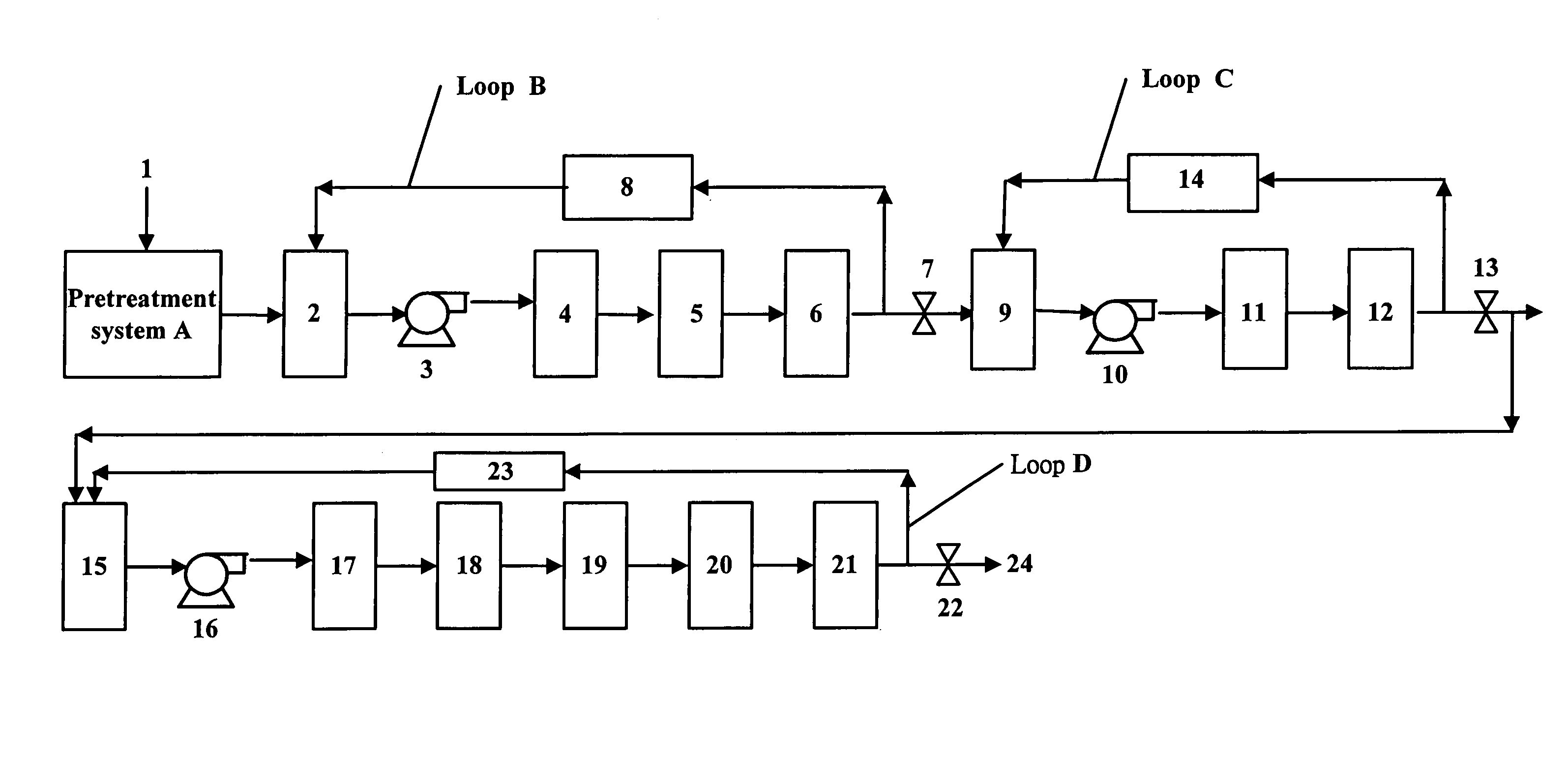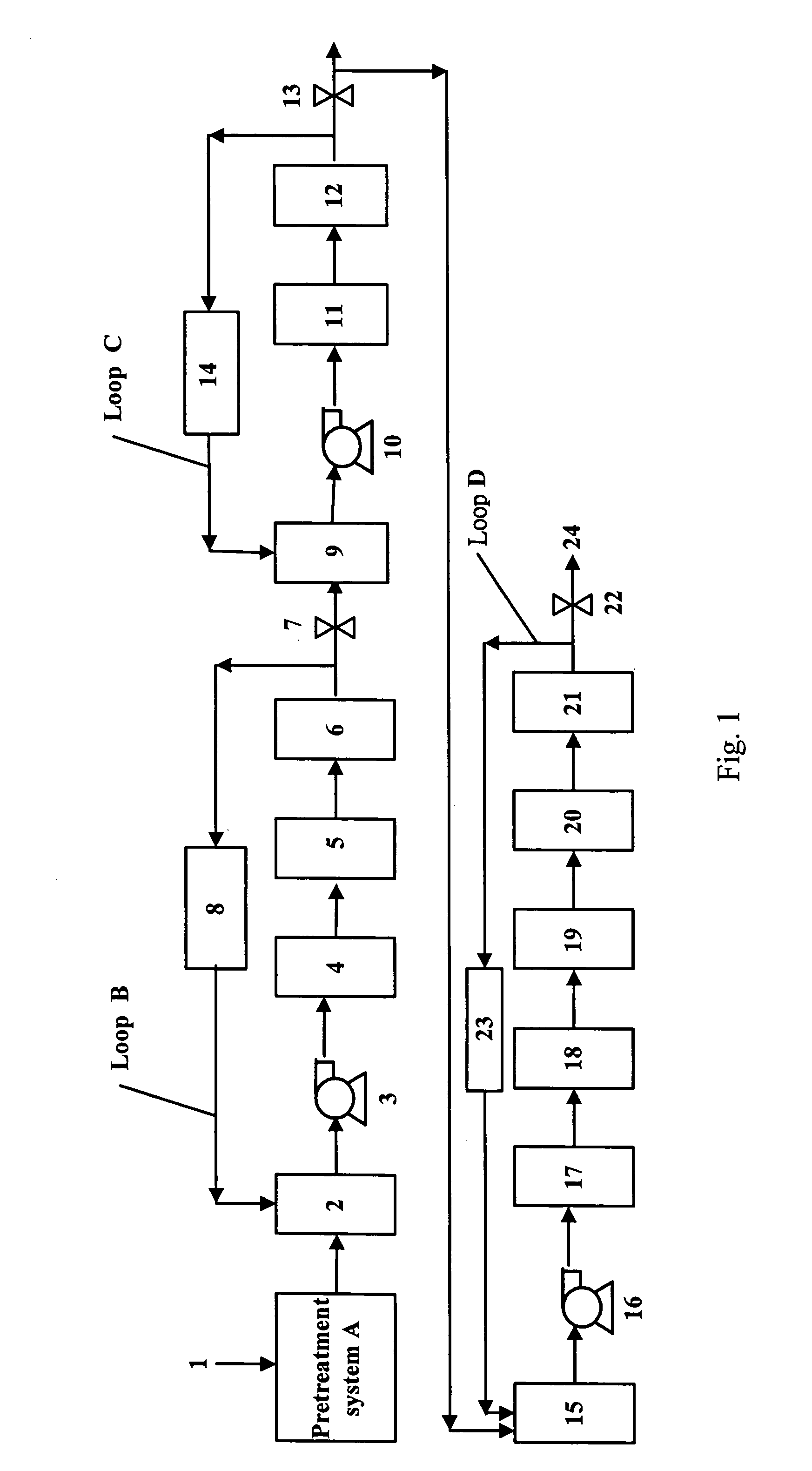Process for removing organics from ultrapure water
a technology of organics and purification process, applied in water treatment multi-stage treatment, water/sewage multi-stage treatment, separation process, etc., can solve the problem of the most difficult to overcome the removal of organic matter (represented by toc) in the purification of water, and achieve the effect of reducing toc in water
- Summary
- Abstract
- Description
- Claims
- Application Information
AI Technical Summary
Benefits of technology
Problems solved by technology
Method used
Image
Examples
example 1
[0027]A surfactant NCW commonly used in a semiconductor manufacturing process was continuously injected into a pipeline between a pump 3 and an UV oxidizer 4 shown in FIG. 1, so that 75 ppb of NCW was added. This example was carried out in a 100% recycle ratio where all treated water was completely recycled to the storage tank 2. After the UV irradiation, the TOC removal rate was about 8˜10%. In this example, an additional ion exchange resin unit was added after the ion exchange resin unit 6. This cycle had two ion exchange resin units to verify the function of the ion exchange resin unit. After the first ion exchange resin unit, the TOC removal efficiency was about 46˜54% with a stable TOC removal of 35˜40 ppb; and after the second ion exchange resin unit, the TOC removal efficiency was only 8˜12% with a TOC removal of 7.5˜9.5 ppb. The above data indicate that organic matters are dissociated into ion states after UV oxidation, the first ion exchange resin unit has a high adsorption...
example 2
[0028]A surfactant NCW commonly used in a semiconductor manufacturing process was continuously injected into a pipeline between a pump 3 and an UV oxidizer 4 shown in FIG. 1, so that 10 ppb of NCW was injected. This example was carried out in a 100% recycle ratio where all treated water was completely recycled to the storage tank 2. After the UV irradiation, the TOC removal rate was about 18˜20%. In this example, an additional ion exchange resin unit was added after the ion exchange resin unit 6. This cycle had two ion exchange resin units same as in Example 1. After the first ion exchange resin unit, the TOC removal efficiency was about 62% with a stable TOC removal of 6.2˜6.6 ppb; and after the second ion exchange resin unit, the TOC removal efficiency was only 2.8˜3% with a TOC removal of 0.3 ppb. The above data indicate that most of the organic matters dissociated into ion states after UV oxidation are adsorbed by the first ion exchange resin unit, i.e. the second ion exchange r...
PUM
| Property | Measurement | Unit |
|---|---|---|
| ion adsorption | aaaaa | aaaaa |
| concentration | aaaaa | aaaaa |
| total organic carbon | aaaaa | aaaaa |
Abstract
Description
Claims
Application Information
 Login to View More
Login to View More - R&D
- Intellectual Property
- Life Sciences
- Materials
- Tech Scout
- Unparalleled Data Quality
- Higher Quality Content
- 60% Fewer Hallucinations
Browse by: Latest US Patents, China's latest patents, Technical Efficacy Thesaurus, Application Domain, Technology Topic, Popular Technical Reports.
© 2025 PatSnap. All rights reserved.Legal|Privacy policy|Modern Slavery Act Transparency Statement|Sitemap|About US| Contact US: help@patsnap.com



